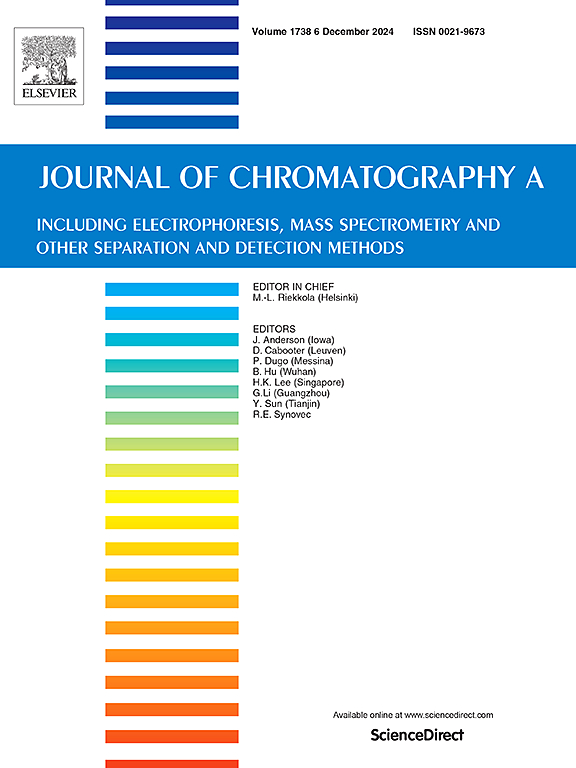深共晶溶剂修饰碳纳米管作为毛细管电泳中增强对映体分离的添加剂
IF 4
2区 化学
Q1 BIOCHEMICAL RESEARCH METHODS
引用次数: 0
摘要
碳纳米管(CNTs)具有许多优良的性能;然而,它们的强疏水性使它们难以在水溶液中分散,导致聚集。虽然它们被认为在毛细管电泳(CE)对映体分离中具有很大的潜力,但这一问题仍然限制了它们的广泛应用。在这项工作中,我们利用亲水性深共晶溶剂(DESs)通过物理吸附对羧化多壁碳纳米管表面进行修饰,制备了DESs@CNTs功能材料作为CE中的缓冲添加剂。与单一麦芽糖糊精(MD)分离体系相比,DESs@CNTs改性体系在手性分离方面具有显著的优势。不仅模型药物的分辨率提高,而且手性选择体的数量减少。我们使用红外光谱、核磁共振、x射线衍射和透射电子显微镜等多种方法对DESs@CNTs进行了详细的表征。为了达到更好的分离效果,对影响分离的几个关键因素进行了系统的研究。此外,还讨论了DESs@CNTs提高紫外光谱分离的可能机理。本研究是DESs@CNTs功能材料在CE手性分离中的首次应用,为开发新型手性识别材料奠定了坚实的基础。本文章由计算机程序翻译,如有差异,请以英文原文为准。
Deep eutectic solvents modified carbon nanotubes as additives for enhanced enantioseparation in capillary electrophoresis
Carbon nanotubes (CNTs) possess many excellent properties; however, their strong hydrophobicity makes it difficult for them to disperse in aqueous solutions, leading to aggregation. Although they are considered to have great potential in capillary electrophoresis (CE) for enantioseparation, this issue still limits their widespread application. In this work, we modified the surface of carboxylated multi-walled CNTs with hydrophilic deep eutectic solvents (DESs) via physical adsorption, preparing DESs@CNTs functional materials as buffer additives in CE. Compared to the single maltodextrin (MD) separation system, the DESs@CNTs modified system exhibited significant advantages in chiral separation. Not only was the resolution of the model drugs increased, but the amount of chiral selectors was reduced. We conducted detailed characterization of DESs@CNTs using several methods such as infrared spectroscopy, nuclear magnetic resonance, X-ray diffraction, and transmission electron microscopy. To achieve better separation, a systematic investigation of several key factors affecting the separation was performed. Additionally, we discussed the potential mechanisms of DESs@CNTs on improving separation by ultraviolet spectroscopy. This study is the first application of DESs@CNTs functional materials in CE chiral separation, laying a solid foundation for the development of novel chiral recognition materials.
求助全文
通过发布文献求助,成功后即可免费获取论文全文。
去求助
来源期刊

Journal of Chromatography A
化学-分析化学
CiteScore
7.90
自引率
14.60%
发文量
742
审稿时长
45 days
期刊介绍:
The Journal of Chromatography A provides a forum for the publication of original research and critical reviews on all aspects of fundamental and applied separation science. The scope of the journal includes chromatography and related techniques, electromigration techniques (e.g. electrophoresis, electrochromatography), hyphenated and other multi-dimensional techniques, sample preparation, and detection methods such as mass spectrometry. Contributions consist mainly of research papers dealing with the theory of separation methods, instrumental developments and analytical and preparative applications of general interest.
 求助内容:
求助内容: 应助结果提醒方式:
应助结果提醒方式:


